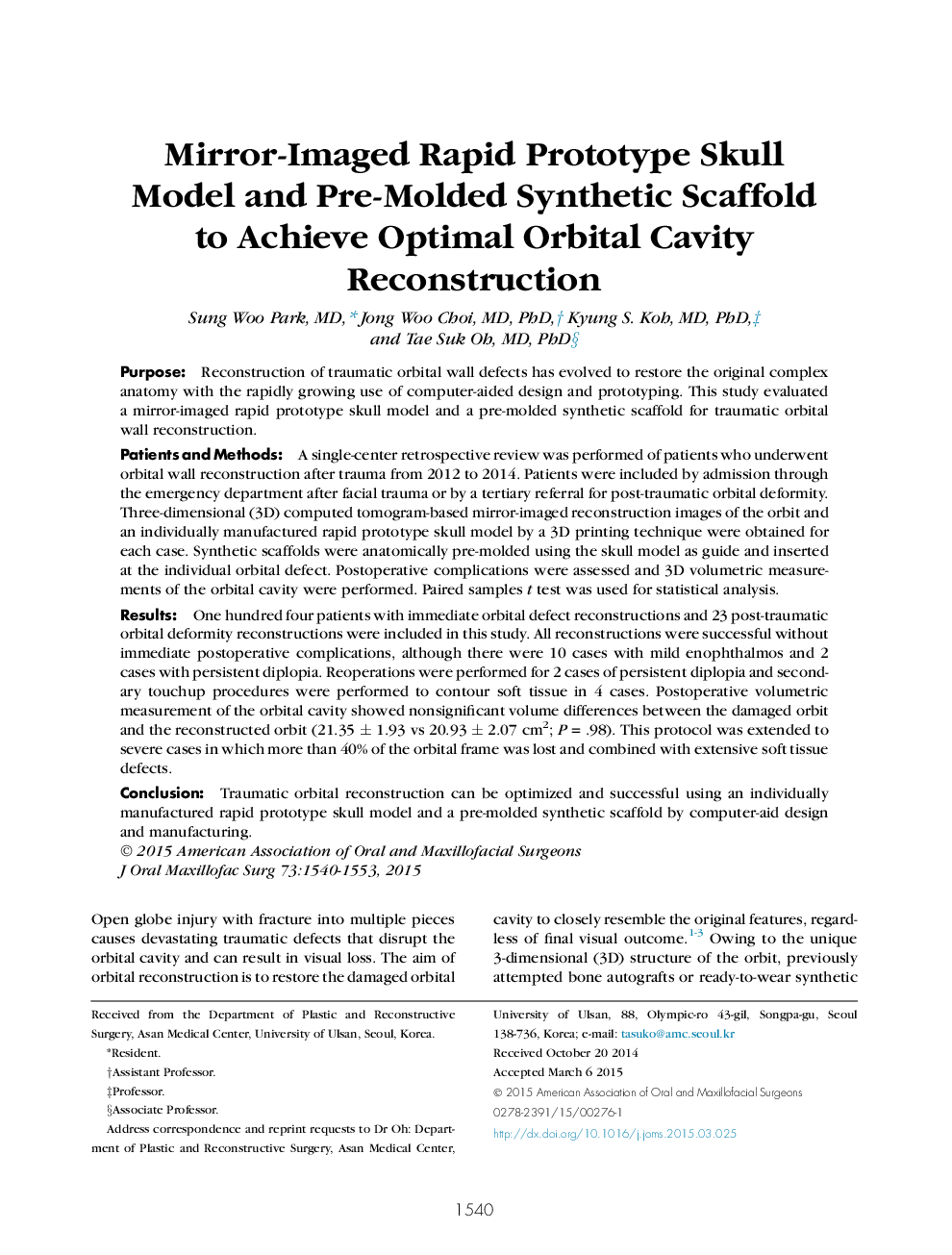| کد مقاله | کد نشریه | سال انتشار | مقاله انگلیسی | نسخه تمام متن |
|---|---|---|---|---|
| 3152326 | 1198006 | 2015 | 14 صفحه PDF | دانلود رایگان |
PurposeReconstruction of traumatic orbital wall defects has evolved to restore the original complex anatomy with the rapidly growing use of computer-aided design and prototyping. This study evaluated a mirror-imaged rapid prototype skull model and a pre-molded synthetic scaffold for traumatic orbital wall reconstruction.Patients and MethodsA single-center retrospective review was performed of patients who underwent orbital wall reconstruction after trauma from 2012 to 2014. Patients were included by admission through the emergency department after facial trauma or by a tertiary referral for post-traumatic orbital deformity. Three-dimensional (3D) computed tomogram-based mirror-imaged reconstruction images of the orbit and an individually manufactured rapid prototype skull model by a 3D printing technique were obtained for each case. Synthetic scaffolds were anatomically pre-molded using the skull model as guide and inserted at the individual orbital defect. Postoperative complications were assessed and 3D volumetric measurements of the orbital cavity were performed. Paired samples t test was used for statistical analysis.ResultsOne hundred four patients with immediate orbital defect reconstructions and 23 post-traumatic orbital deformity reconstructions were included in this study. All reconstructions were successful without immediate postoperative complications, although there were 10 cases with mild enophthalmos and 2 cases with persistent diplopia. Reoperations were performed for 2 cases of persistent diplopia and secondary touchup procedures were performed to contour soft tissue in 4 cases. Postoperative volumetric measurement of the orbital cavity showed nonsignificant volume differences between the damaged orbit and the reconstructed orbit (21.35 ± 1.93 vs 20.93 ± 2.07 cm2; P = .98). This protocol was extended to severe cases in which more than 40% of the orbital frame was lost and combined with extensive soft tissue defects.ConclusionTraumatic orbital reconstruction can be optimized and successful using an individually manufactured rapid prototype skull model and a pre-molded synthetic scaffold by computer-aid design and manufacturing.
Journal: Journal of Oral and Maxillofacial Surgery - Volume 73, Issue 8, August 2015, Pages 1540–1553
